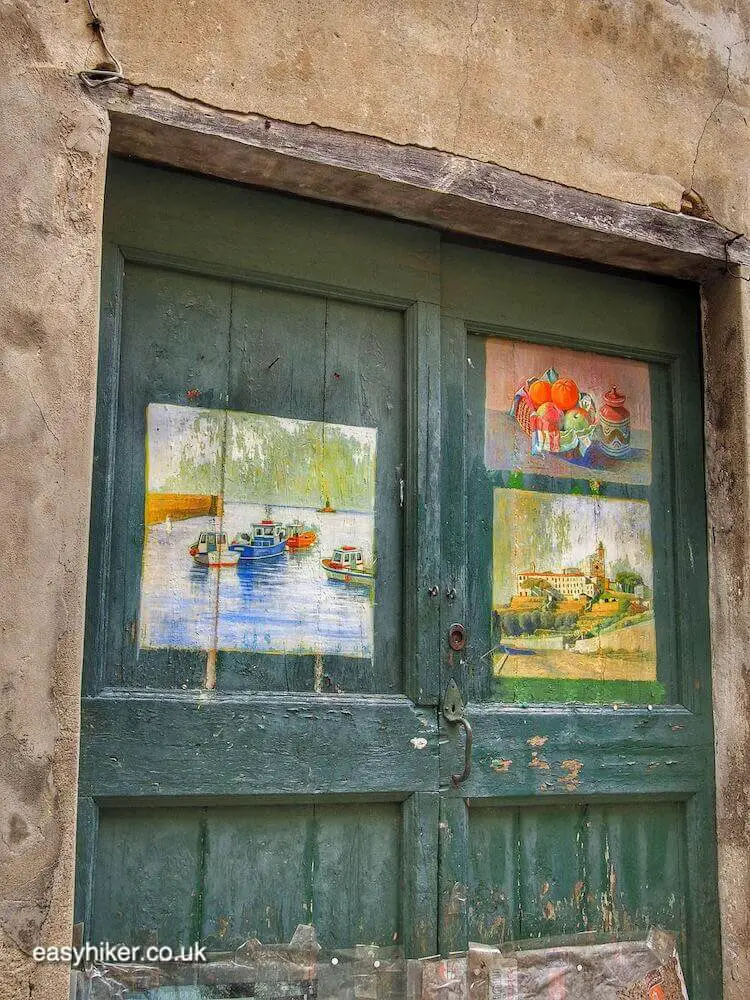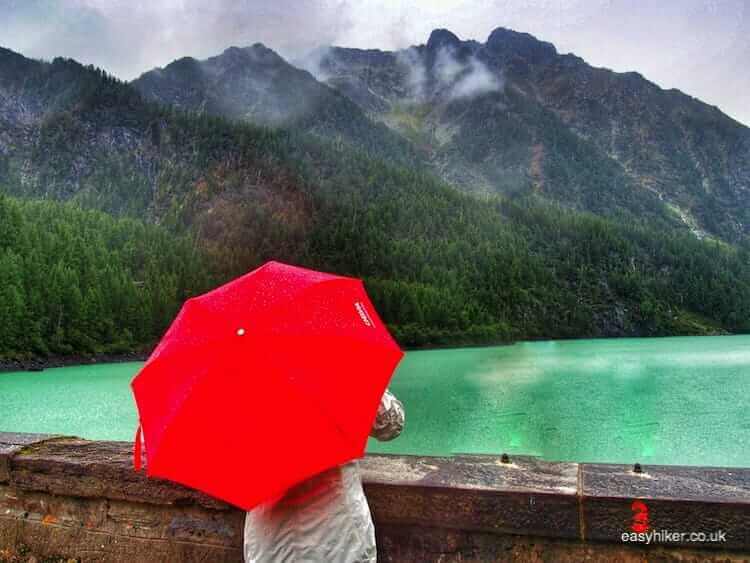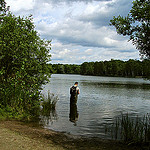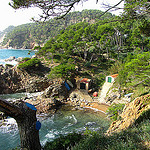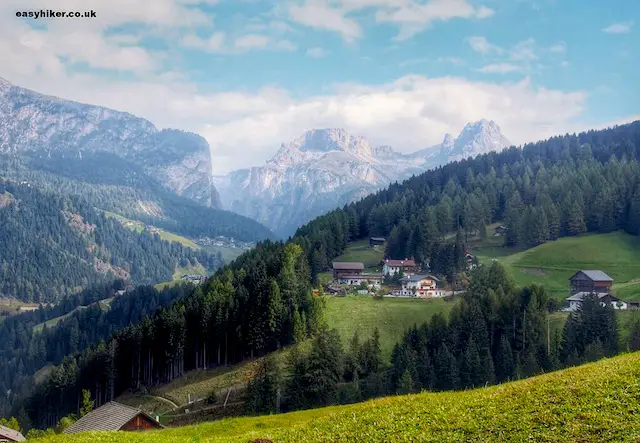If you have ever visited the Italian Riviera, aka Liguria, one of the things you will fondly remember is the train that connects the various small resort towns along the coast.
This train is not one of those fancy high-speed bullet numbers that dash through the countryside. Instead, it takes its time – this is Italy, after all, where all the good things in life demand that you take the time to enjoy them.
The train rambles along, past palm trees and beaches, from one orange-and-terracotta village to the next, and you are meeting pretty much all the people who make up the fabric of local life -tourists who take pictures of the Mediterranean Sea out of the train windows, angelic children who are throwing tyrannical tantrums to impose their iron rule upon holidaying families, grannies who struggle with the heat, tired commuters, noisy teenagers.
I have refreshed your memory of these trains because, very soon, memories will be all that is left. The coastal Riviera train is gradually eaten up by progress, and as you are reading this, a new railway track is being ploughed through the backcountry, presumably in the hope that it will cut down the travel time from the French border to Genoa by 5 or 10 minutes.
Towns like Ospedaletti and San Stefano al Mare already lost their train stations about 15 years ago while Sanremo got a new one in the middle of a rock which feels like a Bond villain’s lair.
Last autumn, it was Cervo’s and Porto Maurizio’s turn to bid farewell to their train connections: the province of Imperia is now almost entirely traversed by the new track which already makes up nearly half the entire journey from the border to Genoa.
For anybody who loves the area, this is mainly, but not entirely bad news. Coastal towns have suffered, so much is true, but many inland villages stand to benefit. This is because the old stations were all located on the coast, while the new stations have been constructed a kilometre or two further inland, and many of the historical inland towns that used to be pretty far away are now enticingly near.
Here’s How to Discover more of Diano
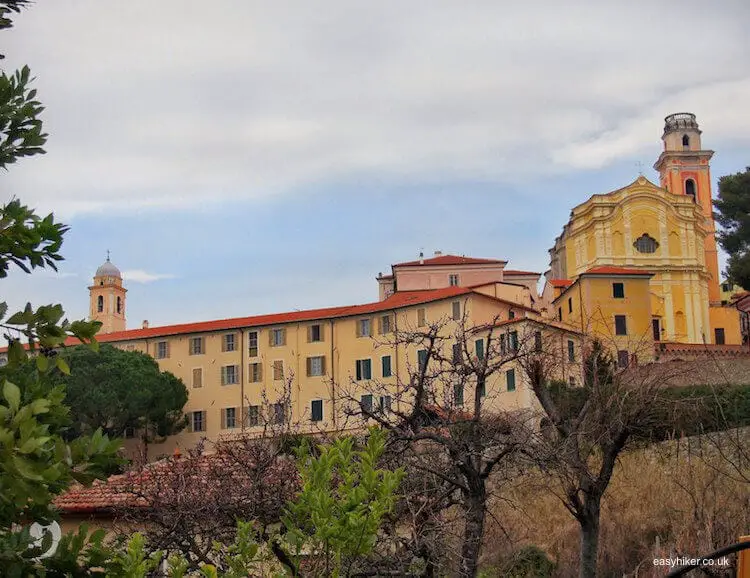
Take, for example, Diano Castello. The nearest old station was Diano Marina, located in a not specifically attractive coastal town. The new station, conversely, is sitting about 2 kilometres inland. It is called simply Diano, presumably because it is meant to serve the network of half a dozen towns and villages which are all called Diano (Diano this, Diano that).
Diano Castello, by a long way the prettiest and most historical of the Diano clan, could regain some of its former status at the top of the family table. And visitors of the Riviera may find places on their route that they would otherwise have missed.
So while the new railway may not be all bad, the new stations invariably are. I used to believe that Italians could not build anything ugly. Whatever an Italian architect builds – even if it is something as prosaic as a school, a municipal office, a postal bureau – he always feels obliged to enrich the urban fabric, to leave behind a better, i.e. more beautiful world than the one he had started with. As I said: I used to believe that.
But I am beginning to wonder.
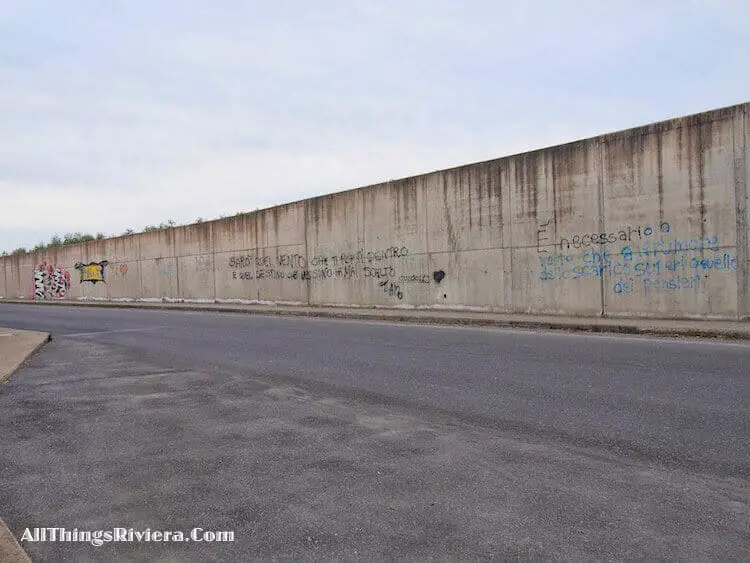
The landscape, at any rate, soon improves as you turn to your right behind the station, following the Corso Luigi Saguato in the direction of Diano San Pietro.
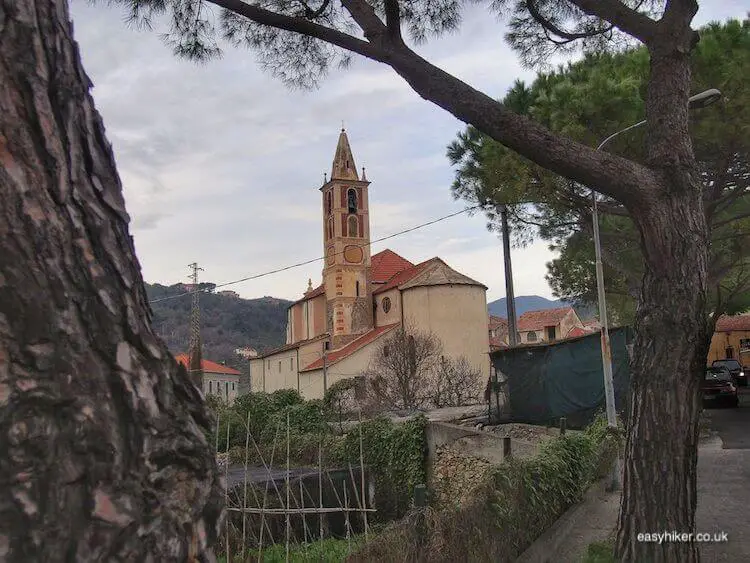
Turn left behind the church – in what appears to be the village centre – and right into Via Rue Belle after the bridge across the small local river.
This may not feel as though it was leading you anywhere (you will be passing garages and a shop for building materials) but it is the most direct way of approaching Diano Castello from the train station.
See it like this, “accentuating the positive in the spirit of the great philosopher Bing Crosby: all this meandering through the countryside allows you to steal a glance behind the curtains of the “tourists’ Italy”, providing you with an altogether not unpleasant introduction to the area and the chance to discover more of Diano.
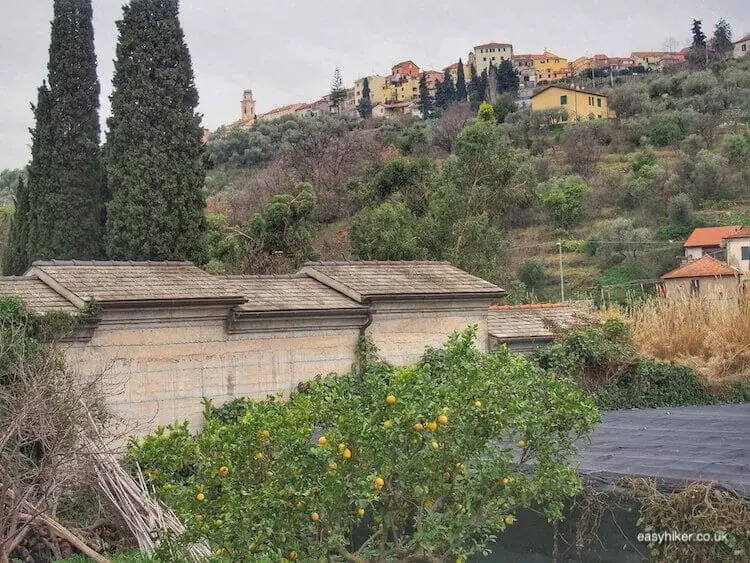
Now look for the sign that says “a Muntà” and for the arrow that points towards the Centro Storico. This will lead you through a beautiful and calm old olive grove …
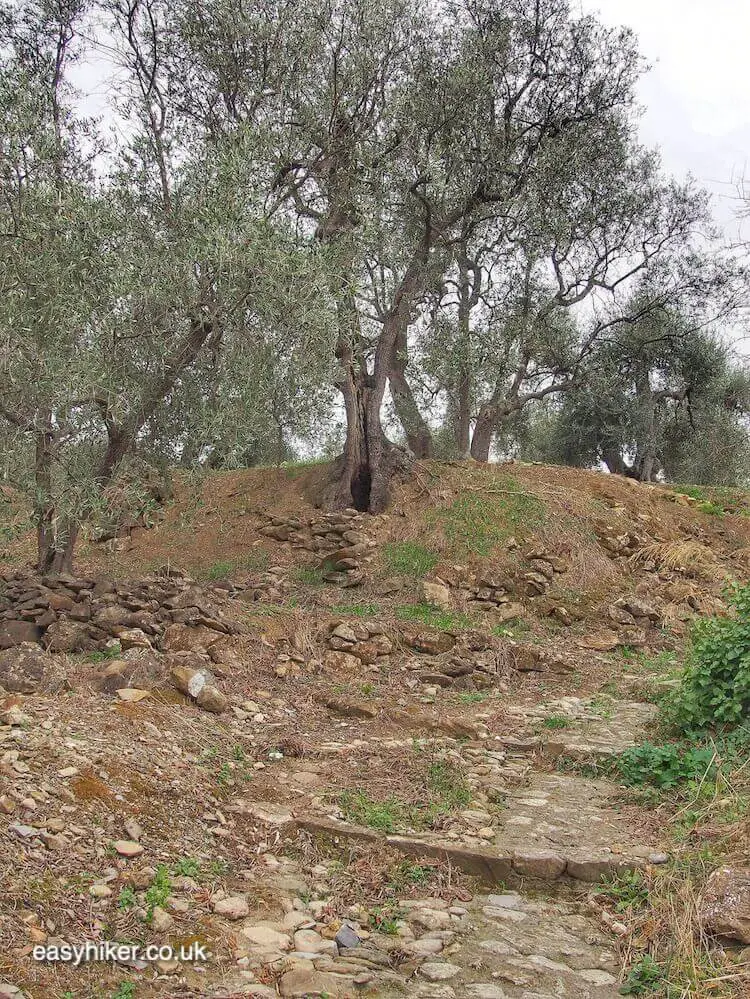
… and eventually, on the far side, to the medieval village of Diano Castello itself.
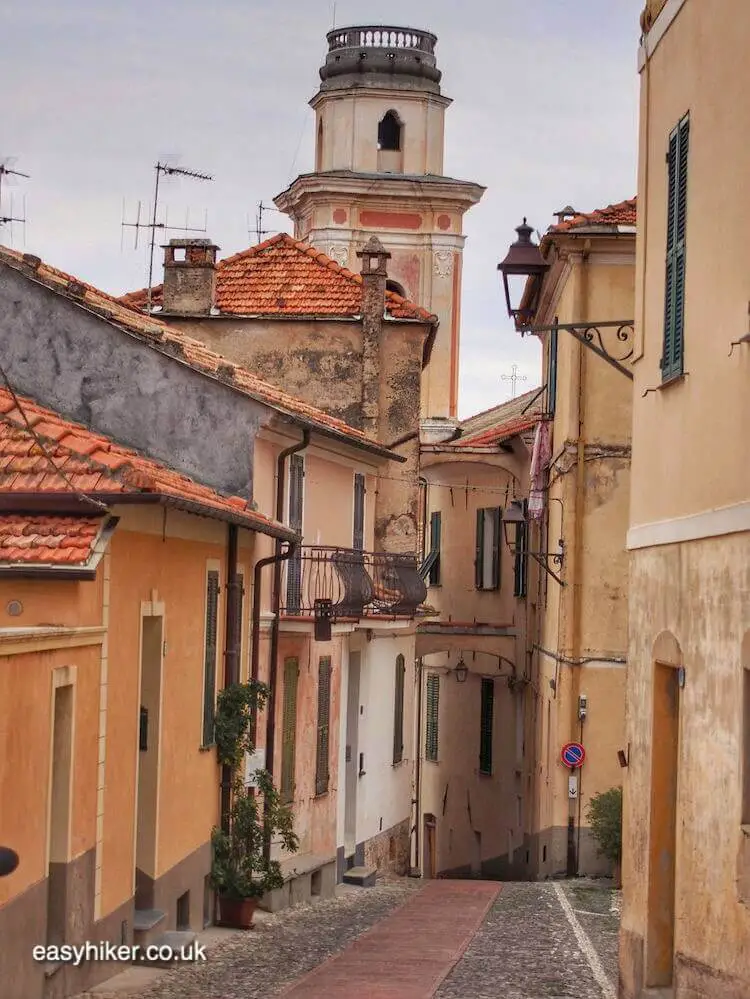
For centuries, Diano Castello served all the farmers from the region as a refuge against Saracene pirates. Pirates, for some reason, generally get good PR: they are the half-romantic, half-comical face of crime in popular mythology, somewhere between “The Princess Bride” and “Captain Jack Sparrow”.
In truth, however, they were – in the Mediterranean at least – merciless killers and slave traders, the terror of all coastal settlements for nearly a thousand years. Locals had to be ready to drop everything within minutes and to flee into fortified refuges, sometimes for weeks.
Diano Castello still has the water reservoirs that were built in the Middle Ages to resist such longer sieges.
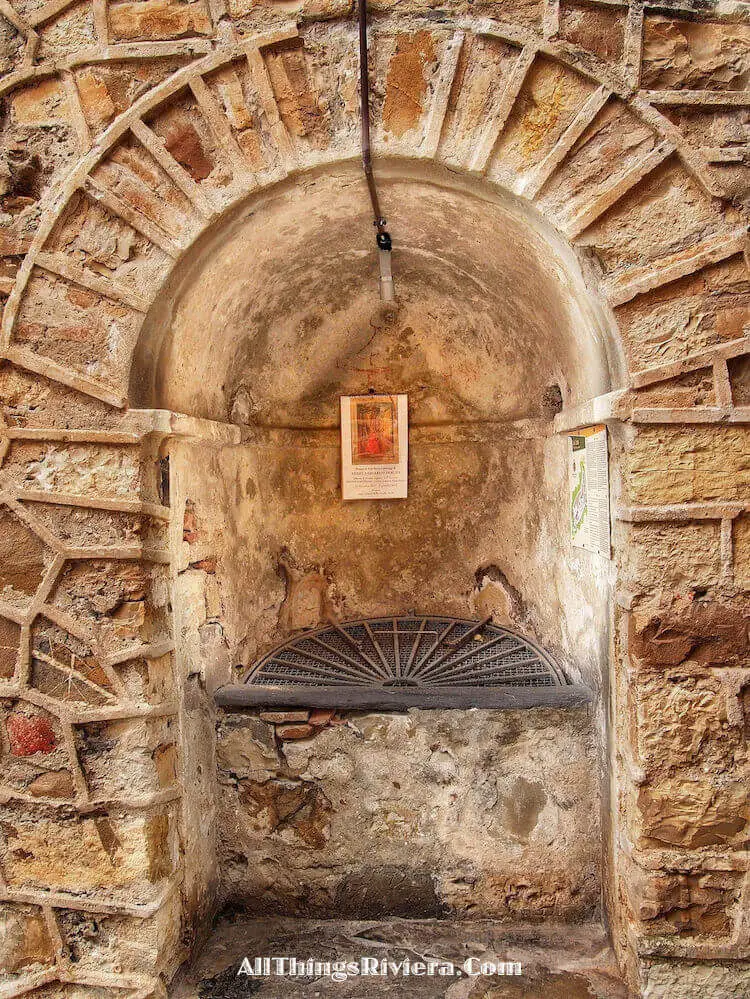
The town’s oldest church, Santa Maria Assunta, was constructed in the 13th century, and although you are not allowed to enter, you can see the well-preserved interiors from the outside.
From Santa Maria Assunta, two streets are leading down to the other end of the town, which is centered on Diano Castello’s main (baroque) church.
You can walk one of them up and the other one down …
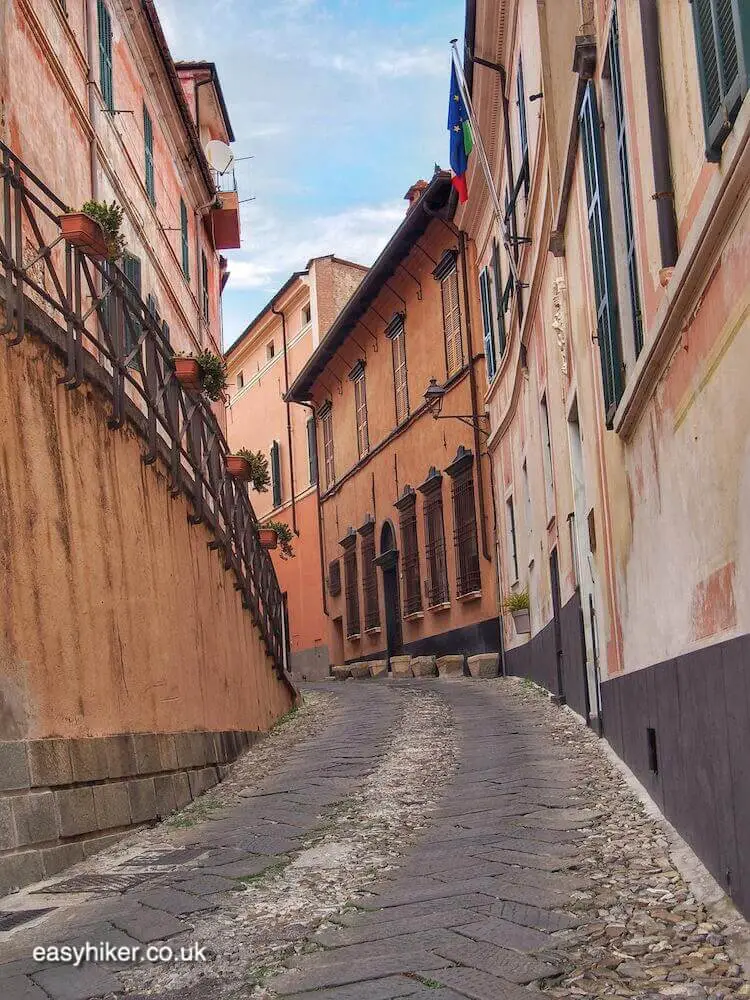
… before turning towards the Caffe del Borgo for a hot drink or a sandwich (it’s the only place in town that is open all year).
Diano Castello is not big, but there is a lot to see, as always in Italy. To discover more of Diano, just remember to keep your eyes open.
